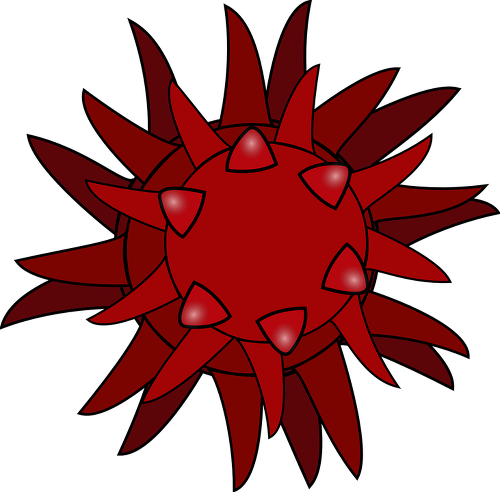Microbial cells are dynamic entities that form the basis of life.
When it comes to cells, there are membranes and walls.
It is the cell membrane and the cell wall.
Cell Membrane is a barrier that divides the inner and outer environment of cells, and has a semi-permeable characteristic, so it can selectively receive nutrients and discharge waste products.
Cell wall exists in most microorganisms and provides structural strength to cells.

There are six main types of cell characteristics.
Cellular characteristics include metabolism, reproduction, differentiation, movement, evolution, and communication.
1. Metabolism is the chemical conversion of nutrients, and cells absorb nutrients and release by-products.
2. It is also called reproduction and growth.
Reproduction is written as Reproduction, and growth is written as Growth Most of the time, growth is written.
Growth is the bond between cells that act as machinery and cells that act as encoding devices.
It is also said that one cell is produced by two cells.
3. Differentiation is called the formation of a new substance or structure that transforms cells and occurs only in some microorganisms.
In addition, this differentiation occurs only when the environment is poor. For example, in 70% alcohol, most microorganisms die, but spores survive and can differentiate.
In addition, differentiation is divided into two.
It is Differentiation and Proliferation.
Differentiation is a change in the ability of a cell to be more functionally characterized.
Proliferation is the self-differentiation, renewal, and regenerate of cellular capabilities.
4. It is Motility
Microorganisms have flagella, etc.
5. It is Evolution
Evolution is a genetic change that is passed on to offspring and evolves through mutations in the nucleus and DNA.
6. Finally, it is communication (Comunicatjon).
Intercommunication generates chemical signals to communicate with surrounding cells, and cancer cells are a large example.
It is only found in some cells
As microorganisms and the environment, microorganisms that exist in nature live as populations, and these populations gather to form a microbial community, which is beneficial, neutral, harmful, or interacts.
The ecosystem that makes up these various microbial communities oversees physical and chemical factors, and accordingly, the microbes are regulated according to temperature, pH, and O2, and are affected to remove nutrients and release waste products.
As an example, there are bacteria that live the most at 37 degrees, fungi (fungi and yeast) that live the most at 28 degrees, and microorganisms with aerobic, anaerobic, and painful anaerobic properties.

The evolution of these microorganisms led to the differentiation of microorganisms with their respective characteristics, and the common ancestor of these microorganisms is called LUCA.
LUCA is differentiated into bacteria, archaea (ones that do not have a nucleus like prokaryotes, e.g., methane-producing bacteria, extremely hydrophilic bacteria, basophils, hyperthermic bacteria) and eukaryotes.
After this LUCA, Cyanobacteria was created, which is a photosynthetic bacterium, which is the starting point for spreading the seeds of life by generating oxygen.
During the Earth's history of 4.6 billion years, the first cells were created 3.8 to 3.9 billion years ago, and 2 billion years ago, oxygen was produced, and only microorganisms existed until 1 billion years ago.
It is estimated that there are currently 2.5 to 5 * 10^30 of these microorganisms...
Most microorganisms are most abundant on the surface of the ocean.
There are five diseases that these microorganisms have had the most in the past.

Toxic pneumonia, Stretoccus pnewnoniae
Tuberculosis, Mycobacterium tuberculosis
Gastroenteritis, Fleticobacter pylori
Child disease, Salmonella tiplae (food poisoning)
Diphtheria Corynebacterium diptheriae
And these are all less weighty with penicillin.
In agriculture, there are root nodules bacteria, nitrogen-fixing bacteria from nitrogen bacteria, fibrin decomposition bacteria in the rumen of cows, nutrient regeneration of soil and water, yogurt, cheese, beer, etc.
In addition, it is only used in research such as biofuel (methane), elimination of pollutants, antibiotics, insulin, and clinical medicine in industry.
There are five representatives of the historical beginnings of these microorganisms.
Hooke was the first to describe microbes and fungi under a microscope.

Antoni van leeuvenhoed was the first to describe bacteria
Ferdinand cohn creates bacteriology and discovers bacterial endospores
Louis pasteur proved that cells distinguish between optical isomers and that the spontaneous theory is wrong.
Koch explains the link between microbes and disease, and developed a medium for solid vegetables.
미생물의 특성과 역사
미생물 세포란 생명체의 기본을 형성하는 역동적인 실체이다 세포에게 있어서는 막과 벽이란 것이 있다 세포막과 세포벽이다 세포막(Cell Membrane)은 세포 내부와 외부 환경을 나누는 장벽이며 반
biostudy.tistory.com
'과학 > 미생물학' 카테고리의 다른 글
| Introduction to microbiology, separation and identification of microorganisms, areas where microbiology is used (0) | 2020.07.08 |
|---|---|
| 세균의 분자생물학 (0) | 2016.05.19 |
| 항미생물 약제 (0) | 2016.05.19 |
| 미생물의 생장 억제 방법들 (0) | 2016.05.09 |
| 생장 요인에 따른 미생물 종류 (0) | 2016.05.09 |



